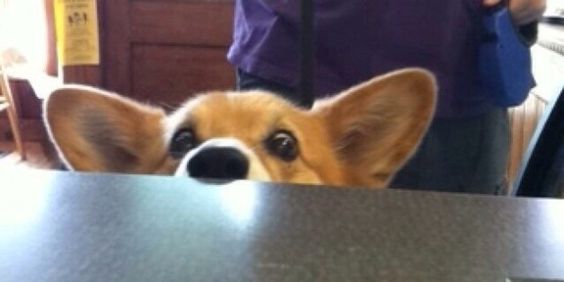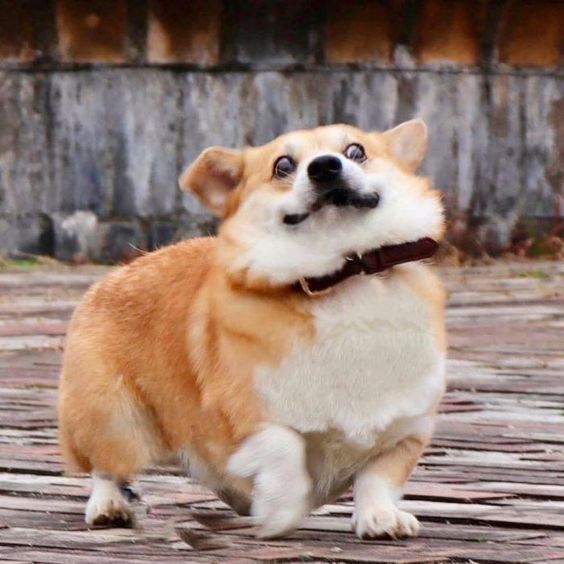The Pembroke Welsh Corgi is a fairly simple and unpretentious dog in terms of maintenance and care. However, Corgi owners need to take into account some of the features of this particular breed.
Since corgi usually lives in a house (apartment), an apartment or a house must be prepared for the appearance of a puppy: remove all the wires and cords from electrical appliances, shoes, and other interesting things from the point of view of a dog learning the world. The best way to teach your dog not to spoil his household items is to keep him away from them throughout his growing up. It is necessary to remove carpets on which puddles inevitable at first may appear. But, as a rule, this problem ceases to exist by six months: corgi is very clean and quickly get used to the street. You can speed up the process if you often take the puppy outside for a short time (not for a walk, but for the toilet), especially immediately after eating. If the floors in the apartment are slippery, it is necessary to cover them with such a covering, which you will not mind throwing away later. Otherwise, the puppy may “go paws”, usually this happens with puppies – owners of strong, heavy bones. You need to stock up on a lot of toys. Among them should be toys made of solid rubber, vein bones, perhaps just fresh tree branches, so that the puppy has something to chew without damaging the furniture in the house. It is very important that the dog cannot pull the “squeaker” out of squeaky toys and swallow it. Corgis are terrible rag-pickers. They are very fond of rag toys, if they are not there, they can chew on their bed or the master’s socks. However, the puppy should not buy rags or soft toys, as he will definitely try to break them, chew their contents (foam rubber or synthetic winterizer), and swallow all these pieces, which can lead to serious problems. But we must not forget that even a record number of toys will never replace play and communication with the owner. And that the education of the dog begins from the moment the dog appears in the house, and not from six months or a year. Therefore, everything that should be prohibited for an adult dog (for example, going to the kitchen, begging, climbing on the sofa, etc.) should be immediately prohibited for the puppy. Because it is impossible to explain to a dog why yesterday it was possible, but today it is suddenly impossible. If you plan to leave the dog alone at home for some time in the future, you should train the puppy to do this. After removing everything that can be chewed, leave the puppy alone in the apartment for a short time. It is possible to leave the TV on so the puppy can hear voices and feel the presence of someone at home. If it is nevertheless undesirable to leave the puppy “free”, you can purchase a cage. Crate training is not difficult at all – it will not cause such stress and outburst of resentment in him as in an adult dog. If for the first time a puppy, closed in a cage, whines, you should wait out this moment and release the puppy only when he calms down and stops crying. In a cage, he must have a mattress, a bowl of water, a toy, a bone. Most often, dogs, trained to the cage from a puppy, get used to it so much that they begin to consider it their “house”. They often go to sleep there themselves, hide their toys there, and begin to guard it from other dogs as their personal territory. The cage is also very convenient at exhibitions – it is a guarantee of the dog’s safety, giving him the opportunity to rest a little, and the owner – to leave his dog for a while.
Feeding

For the most part, corgis are terrible foodies, and the whole problem is not how to feed, but how to refuse an extra bite. At the time of distribution, the puppy usually eats 5 times a day. By six months, the feeding regime is reduced to 2 times, and by the year, if necessary, you can transfer the dog to a one-time feeding, although this is not recommended. It is possible to feed both feed and natural food. Up to 2-2.5 months, the food is usually soaked, then you can switch to dry feeding, but the dog must have constant access to freshwater. Corgi rarely has food allergies, but if this happens, it is recommended to transfer the dog to special dietary rations after consulting a veterinarian. But obesity is often found in corgi even when fed in accordance with the norms indicated on the package. Any norms are an average option. Feeding should be selected individually for each dog (rations, volumes, number of feedings per day, etc.). Since corgis tend to be overweight, many of them eat foods from the Light series. When using treats for training or handling, be sure to take this into account during subsequent feeding and slightly reduce the one-time rate. Do not take your dog for an active walk immediately after feeding. Also, you can not feed the dog immediately after intense physical activity: at least 1.5 hours should pass before feeding.
Hygienic Care
Hygienic care for a Welsh Corgi is not particularly difficult. However, it is necessary to teach the dog from puppyhood to combing, processing the claws, cleaning the ears. Trimming your nails is one of the mandatory, weekly repetitive procedures. At the same time, it is necessary to trim the fur inside the paw and between the toes. This is especially true for puppies. This treatment contributes to the correct formation of the metacarpus. Clean your ears with a soft cotton swab or cotton swab as it gets dirty. You can use special ear cleaners, of which there are a lot of them now. In practice, it has been observed that when the ears of a puppy are actively forming and growing, they get dirty quite quickly and require more frequent cleaning than an adult dog. But at the same time, ordinary pollution cannot be confused with ear diseases. If your puppy often scratches his ears, shakes them, or has an unpleasant smell, you should see a doctor. Corgi needs to be washed as needed since the structure of the coat in these dogs is quite tough. The coat of a healthy dog does not need any special care: you just need to periodically comb it with a comb and brush it. During the molting period, it is better to comb and clean the dog daily. This speeds up the process of replacing the old coat with a new one and significantly reduces the amount of lost wool in the house. It must be remembered that the use of detergents removes grease from the coat. It recovers in about 3 days. During this time, the dog becomes very vulnerable to cold and drafts and may catch a cold. This is especially true in the cold season. But if washing in these cases is a necessity, then it is best to use a hairdryer for drying. Many corgi owners use coveralls to keep their fur free from dirt.
Walking

You can start walking when all age-appropriate vaccinations are made and quarantine is over. Usually, at 2.5-3 months, you can already start introducing the puppy to the street. Do not delay the start of the walks, as this can negatively affect the physical and mental state of the puppy. A dog can grow up cowardly and distrustful, which is not at all typical for a corgi, does not work up a good physical shape, which will not affect the exterior for the better (ligaments can “go”, the back can sag, etc.). At the same time, it should be remembered that the measure is good at everything: the loads and the duration of walks should increase gradually. An adult corgi, being a shepherd dog, should have a sufficient time and distance walk with good physical activity. The training should be started when the corgi has already gained the main growth (from about 6-8 months). It is advisable to determine 3-4 days a week for training the dog and systematically increase the load, carefully monitoring the condition and well-being of the dog. The best thing for a corgi is trotting at different rates. This reinforces the habit of trotting, strengthens the ligaments, develops the joints, and builds the muscles necessary for full movement. Sometimes you need to include the dog’s trotting movement on a slightly taut leash – this helps to strengthen the back muscles. Before training, it is advisable to take a walk for a while, so that the dog does all its business, and you can end the training with a small calm walk.